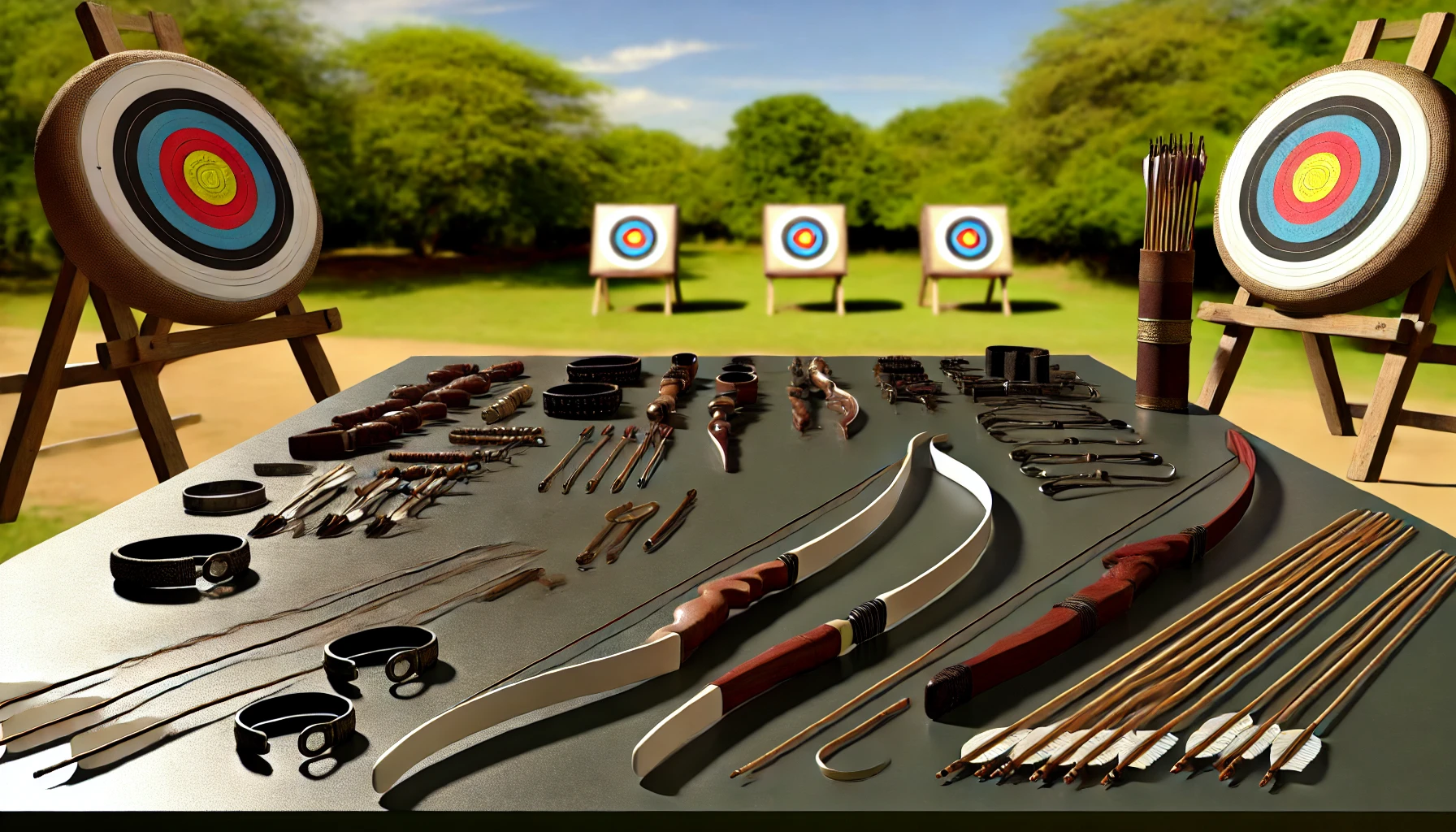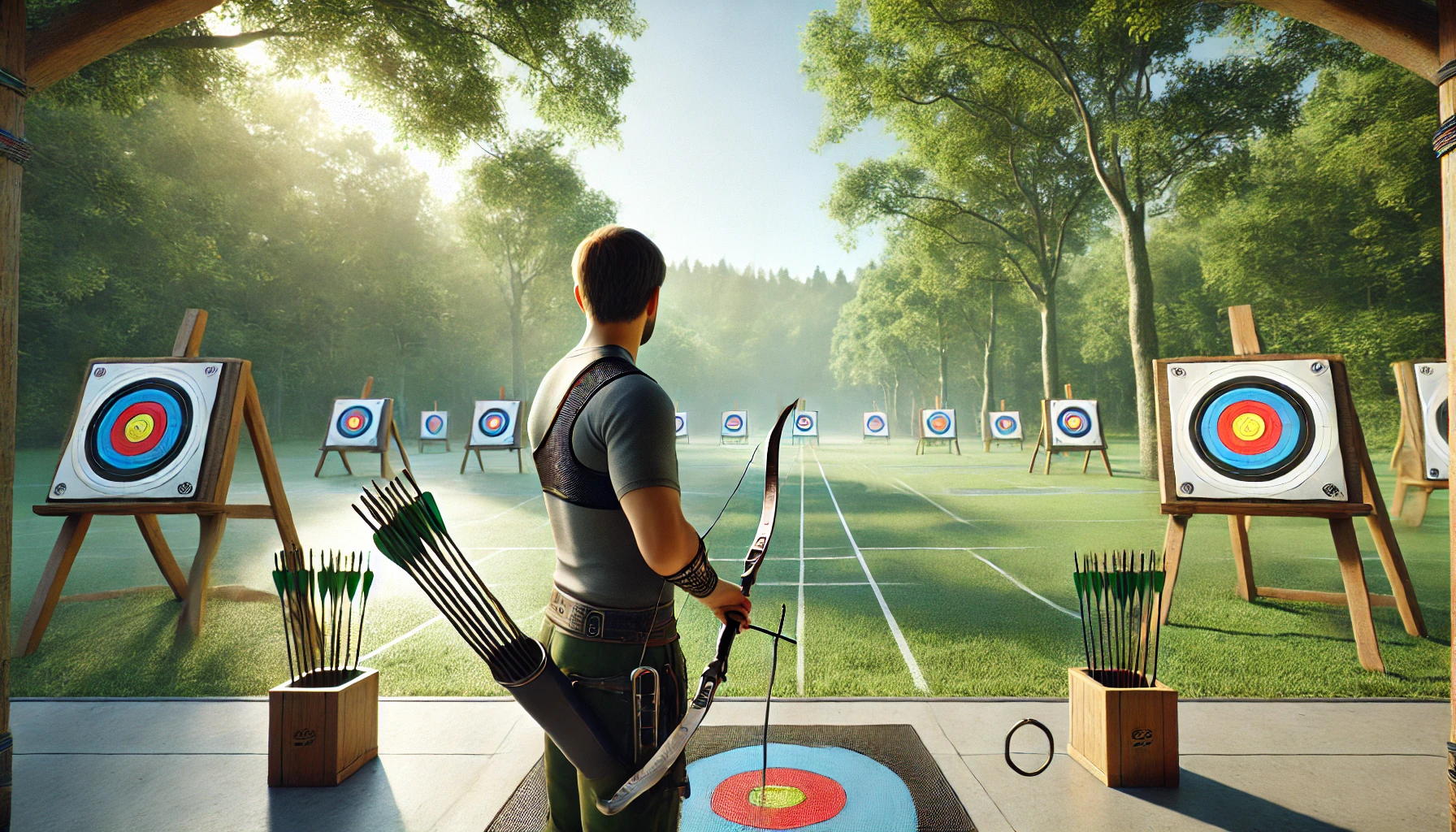Safety and Etiquette in Archery
Can the instructor find my phone location by number if I need help practicing outside in an unfamiliar place? Is archery a dangerous sport? How do I start my training and what do I need to prepare? These and other questions often arise for beginners trying their hand at archery. Archery, an ancient and noble sport, has a special place in Indian culture. And here we will try our best to cover the issue of safety and etiquette of archery in detail.
Overview of Indian Archery
Indian archery is the traditional and modern practice in India. Historically, archery was an important part of Indian culture and its presence is evident in ancient texts, folklore and epics like the Ramayana and the Mahabharata. Traditional Indian archery implies the use of different types of bows and arrows.

Why You Should Try Archery
Due to archery you can experience full-body training and increase muscle strength, endurance and flexibility. It requires considerable concentration and precision, improves cognitive skills and mental acuity.
The nature of archery can be a relaxing activity, as it is repeatable and can reduce stress and promote relaxation. Archery allows you to spend time in nature and benefit your mental mental health as it is often practiced outdoors.
Due to archery you will be able to get acquainted with India's cultural heritage and traditional archery techniques. This can be a useful way to preserve and honor ancient skills.
For competitive people archery offers numerous local, national, and international competitions and challenges. The sport provides a number of opportunities for personal growth and skill improvement.
How to Get Started
If you would like to be a part of an archery club and receive new experience and feelings, below you will find our advice on the way to start your archery training.
Look for local archery clubs or academies offering training programs for beginners.
Start with basic equipment, and seek advice from experienced archers or instructors on the best gear for beginners.
Take lessons from a certified instructor to learn proper techniques, safety measures, and etiquette.
Remember, consistent practice is key to improvement. Set aside regular time for practice to build your skills.
Indian archery is not only a sport; it is a combination of physical exercise, mental discipline and cultural study. If you are looking for a new hobby, a way to connect with your ancestors, or a competitive sport, then archery will be a rewarding and enriching activity.
Archery Etiquette: What You Need to Know Before You Try It
Archery, like many sports, has its own set of etiquette rules designed to ensure safety, respect, and enjoyment for all participants. Below you can find points to pay attention to, the key aspects of archery etiquette and what you need to know before you start.
Safety First
Always follow range rules. Every archery range will have its own specific rules. Familiarize yourself with them and follow them diligently. Never draw or shoot your bow when someone is downrange.
Be aware of where other people are at all times to prevent accidents. Ensure the range is clear before shooting. Confirm with others if unsure.
Respect for Others
Wait for your turn. Archery ranges often operate on a rotation system. Wait for your turn to shoot and be patient. Don’t rush others or pressure them to finish quickly.
Be quiet and considerate. Maintain a quiet environment to help others concentrate. Avoid unnecessary talking or loud noises, especially when others are shooting.
Retrieve arrows together. Typically, archers will retrieve their arrows at the same time. Wait until everyone has finished shooting before walking downrange.
Support fellow archers. Encourage and support other archers, regardless of their skill level. Offer constructive feedback if asked, but avoid unsolicited criticism.
Respect the range. Keep the range clean by picking up after yourself and disposing of any trash properly. Report any safety dangers or equipment issues to the range master.
Proper Conduct
Follow the line. Stand behind the shooting line until it’s your turn to shoot. After shooting, step back from the line to allow others to take their turn.
Respect personal space. Give other archers plenty of space to shoot comfortably. Avoid standing too close to others or crowding the shooting line.
Archery is a sport that requires focus and discipline. Avoid any form of horseplay or distracting behavior.
Equipment Handling
Properly draw and release. Only draw your bow when you are ready to shoot. Never aim at anything you do not intend to shoot. Never dry fire (releasing the string without an arrow), as it can damage the bow and cause injury.
Handle arrows safely. Always point arrows downrange, whether nocked or not. Carry arrows in a quiver or by the point, never by the nock end.
Attire and Gear
Wear appropriate clothing. Avoid loose clothing that could get caught in the bowstring. Use armguards and finger tabs or gloves to protect yourself from string slap and blisters.

Wear sturdy, closed-toe shoes to protect your feet. Avoid sandals or open-toe shoes on the range.
Learning and Improvement
Take lessons. If you’re new to archery, consider taking lessons from a certified instructor to learn proper form and safety techniques. Continuously seek to improve your skills and knowledge.
Ask questions. Don’t hesitate to ask more experienced archers for advice or clarification on range rules and techniques. Most archery communities are friendly and willing to help newcomers.
Observing these rules will ensure a safe and enjoyable experience for yourself and others. Archery is a sport and it requires respect, patience and discipline. Thus, following proper etiquette helps maintain a positive and welcoming atmosphere for all participants.
Maintaining the Safety of Archery Classes
Safety in archery classes is essential for preventing accidents and injuries. This involves a combination of proper equipment maintenance, instructor vigilance, clear communication, and the use of modern technology e.g., location tracking apps. Read further to know our detailed suggestions to maintain safety in archery classes.
Equipment Safety
Regularly inspect and try your equipment. Instructors should inspect all bows, arrows, and protective gear before each class. Look for signs of wear and tear e.g., cracks in the bow, splintered arrows, or worn-out strings.
Keep a maintenance log for each piece of equipment to ensure regular checks and timely replacements. This log should include dates of inspections, findings, and actions taken.
Store equipment in a dry, secure place to prevent damage. Bows should be unstrung if they are not going to be used for an extended period. Make sure arrows are duly stored to prevent bending or breaking.
Keep equipment organized and easily accessible to prevent accidents during setup and breakdown. Use labeled bins or racks to keep everything in order.
Instructor and Participant Safety
Ensure all instructors are certified and have thorough knowledge of archery safety protocols. They should be trained in first aid and emergency response. Instructors should participate in regular training sessions to stay updated on the latest safety practices and teaching methods. Encourage them to attend workshops and certifications.
Begin each class with listening to a safety briefing covering range rules, equipment handling, and emergency procedures. Make sure to include instructions on what to do if they see a safety issue.
Regularly reinforce safety rules throughout the class and address any breaches immediately. Use visual aids and demonstrations to emphasize key points.
All participants should wear armguards, finger tabs, or gloves to protect against string slap and blisters. Make sure you have properly fitting gear and wear it correctly before starting.
Range Safety
Clearly mark the shooting line, waiting area, and downrange boundaries. Use cones, ropes, or painted lines to define these areas.
Always shoot only with an instructor or range officer supervising the range to enforce safety rules. They should be alert and proactive in managing the range.
Know the whistle commands to control shooting activities. For example, one whistle blast to shoot, two to retrieve arrows, and three for an emergency stop.
Retrieve arrows only when the range is declared safe and all shooting has stopped. Use a clear signal e.g., a whistle or flag.
Bridging Traditions and Technology
Use modern technologies like location tracking apps (such as Number Tracker or Glympse) to check your personal safety and share your whereabouts, especially if classes are taking place in an open area in an unfamiliar territory. This ensures that instructors are aware of who is on the range at all times.
Use geofencing to alert instructors if anyone leaves the designated safe areas without permission. This can help prevent participants from wandering into dangerous zones.
Use location tracking apps to store emergency contact information for all participants. Ensure this information is easily accessible in case of an emergency.
Some apps have SOS features that allow users to quickly send their location to emergency services or designated contacts in case of an emergency.
Set up alerts for potential safety breaches, such as someone stepping out of the safe zone or entering restricted areas. These alerts can be sent to instructors’ mobile devices.
Communication and Feedback
Use apps with instant messaging features to communicate quickly with participants and staff. They can be especially useful for sending out safety reminders or addressing issues immediately.
Send group notifications about safety protocols and updates via the app. Ensure everyone receives and acknowledges these messages.
Allow participants to report safety issues anonymously through the app to ensure that all concerns are addressed. Create a culture where safety feedback is encouraged and acted upon.
Combination of traditional safety measures with modern technology like location tracking apps will allow you to create a safer environment for archery classes. They help you to prevent accidents but ensure everyone can enjoy the sport with peace of mind.
Final Points
Archery is not just a sport, but a true art requiring strict compliance with safety rules and etiquette. All participants and archery lovers will be able to easily avoid injury and to enjoy the process while building their skills and improving their health due to understanding the rules and following them. Also consider using location tracking apps, as technology also plays an important role in training and can greatly increase safety during the class. Try the activity for yourself and get the opportunities for personal growth and deep immersion into India's cultural heritage.
